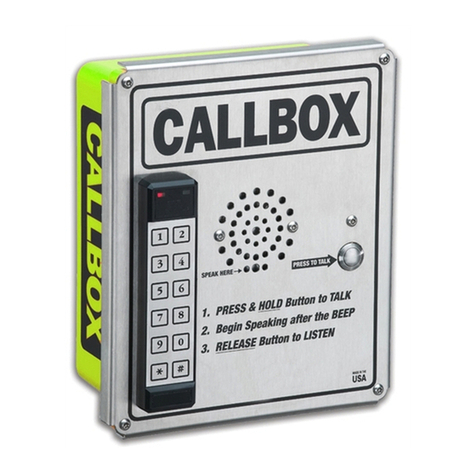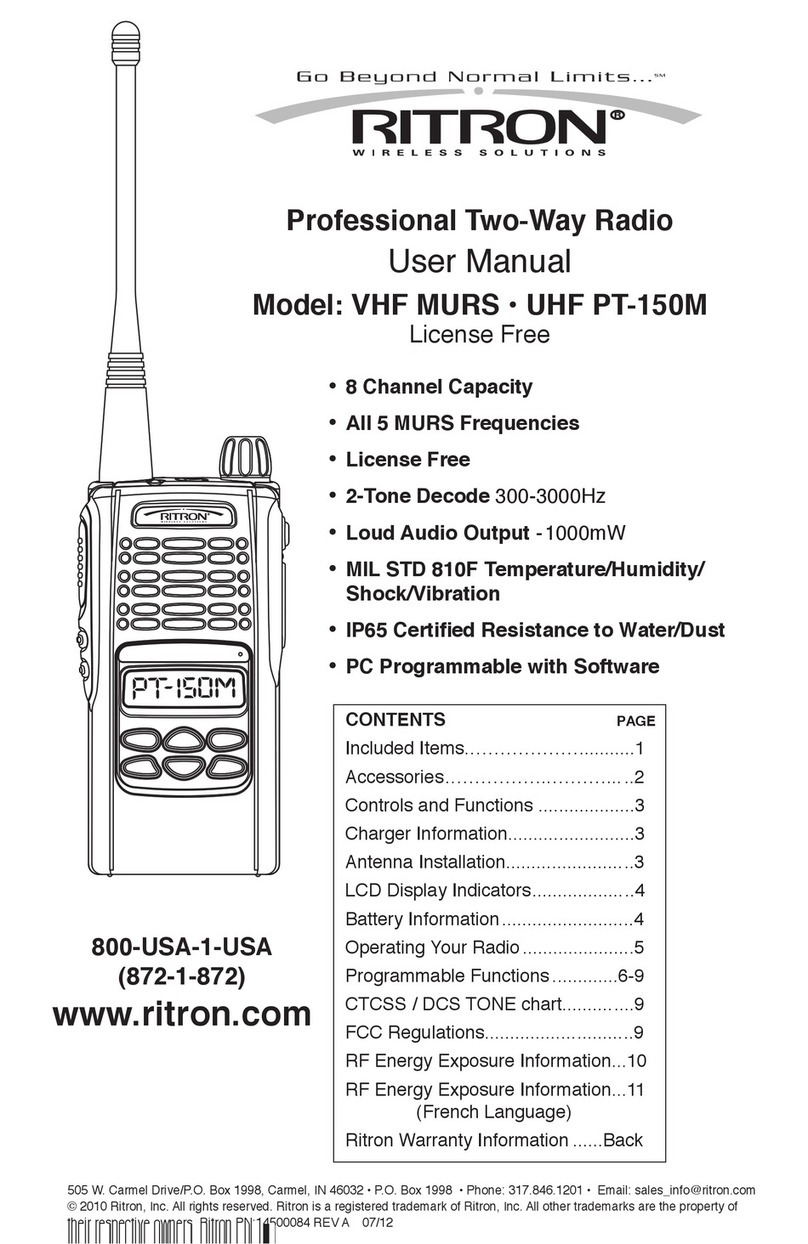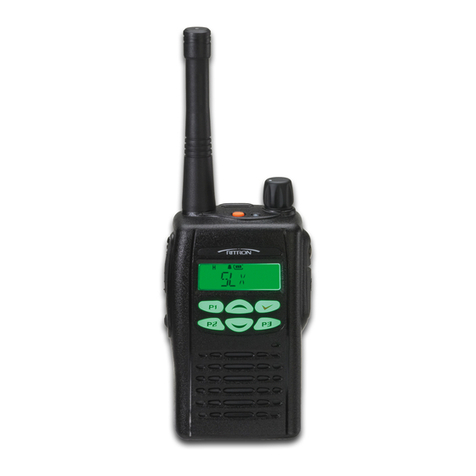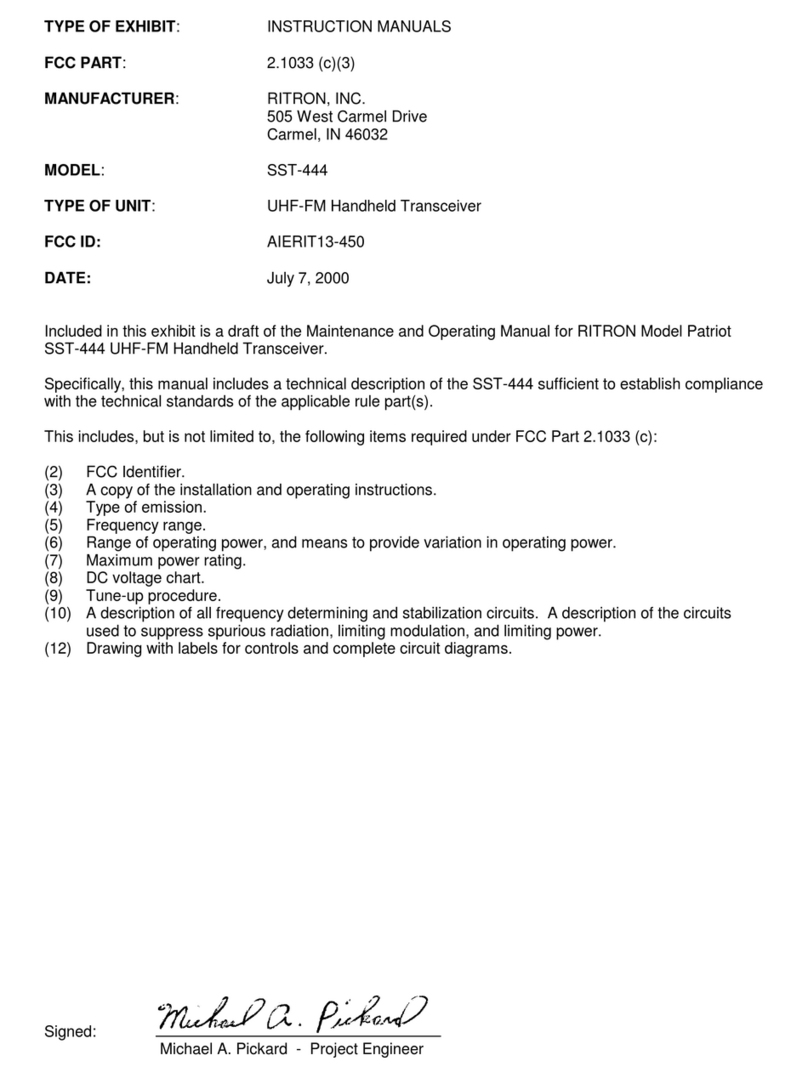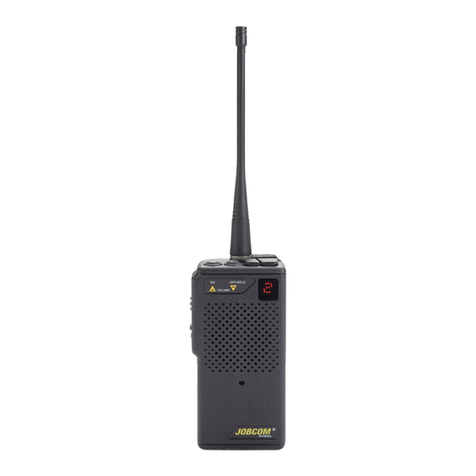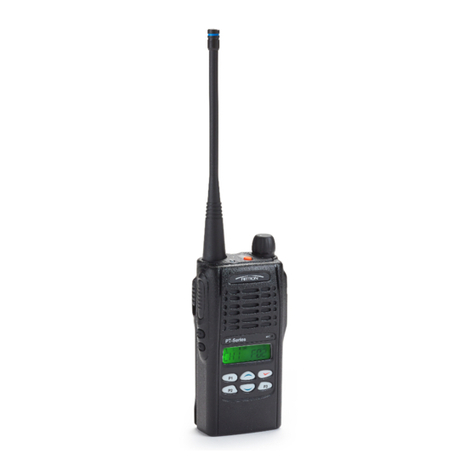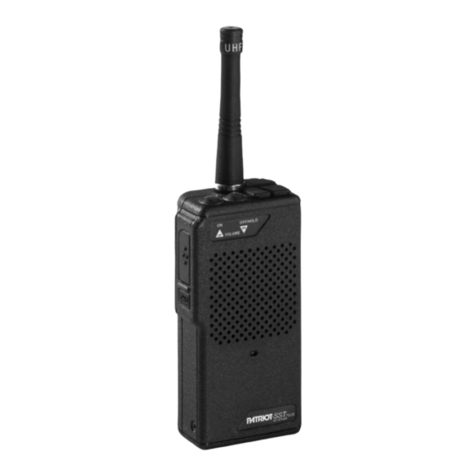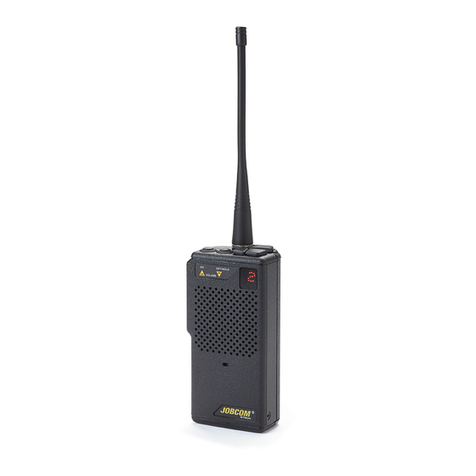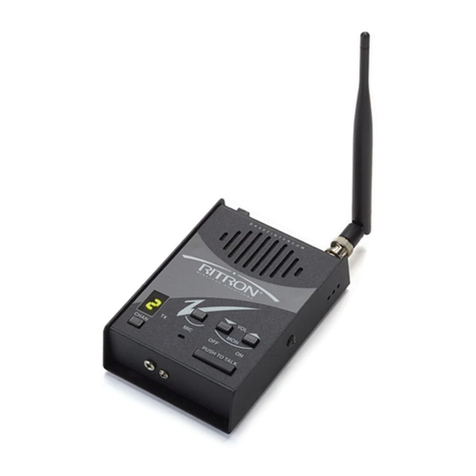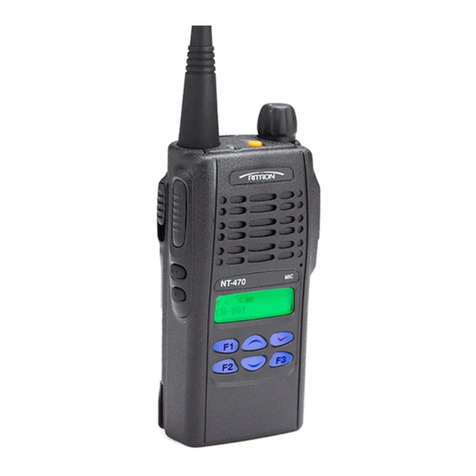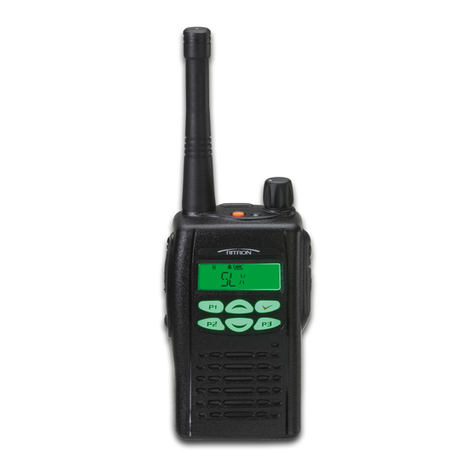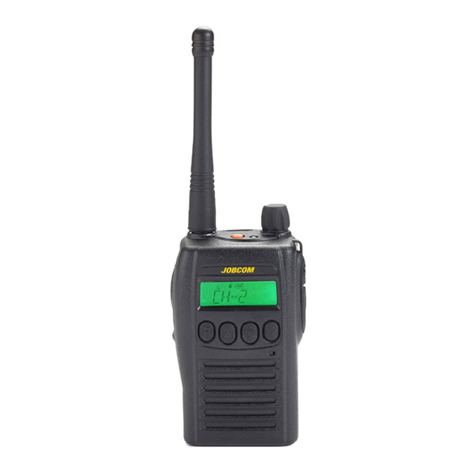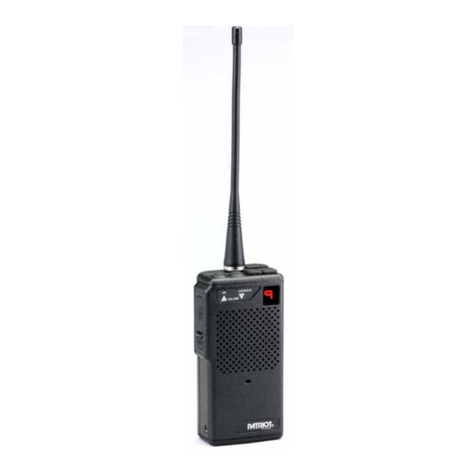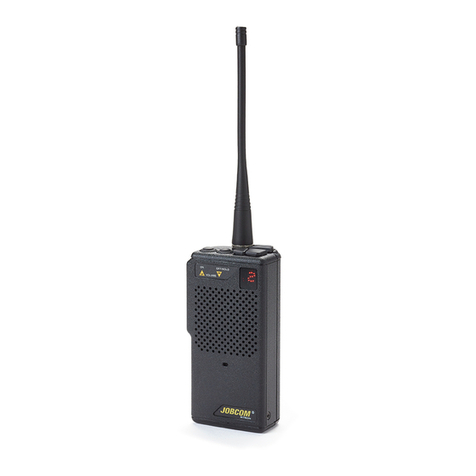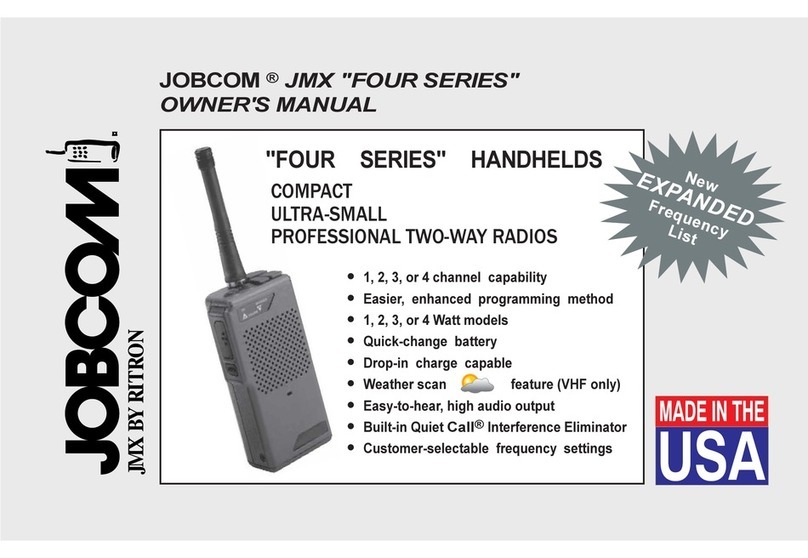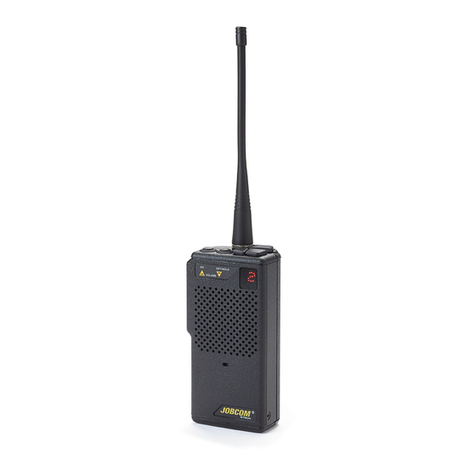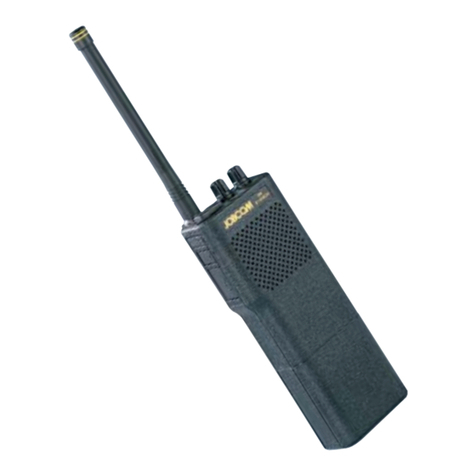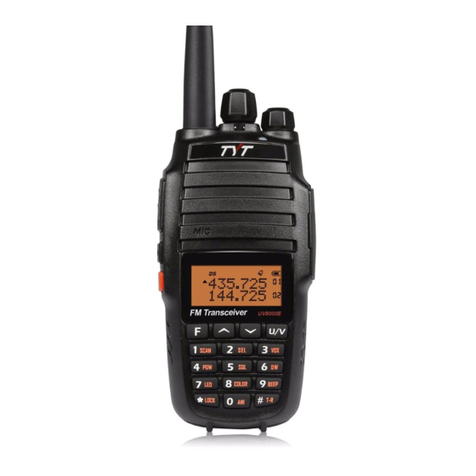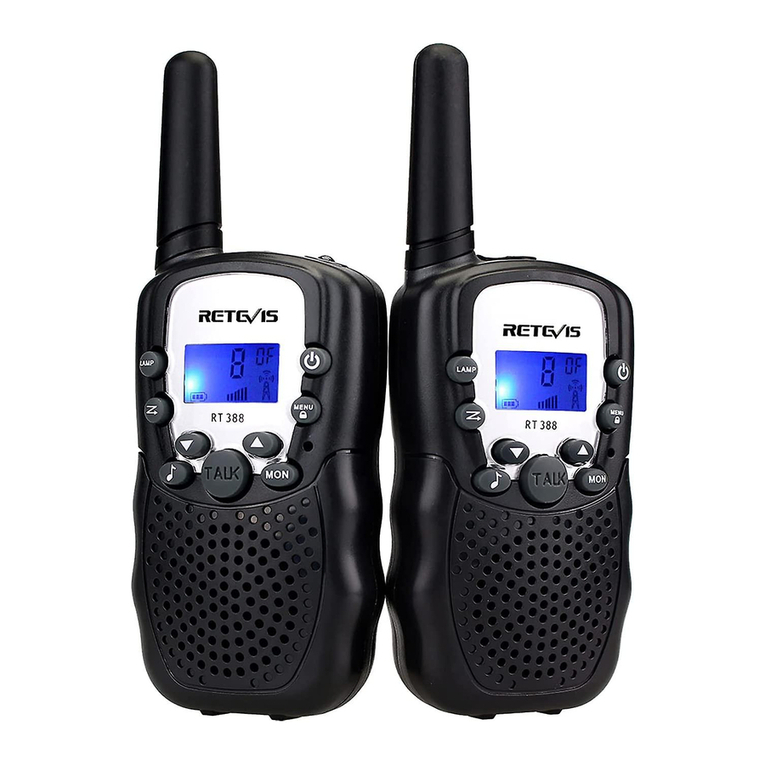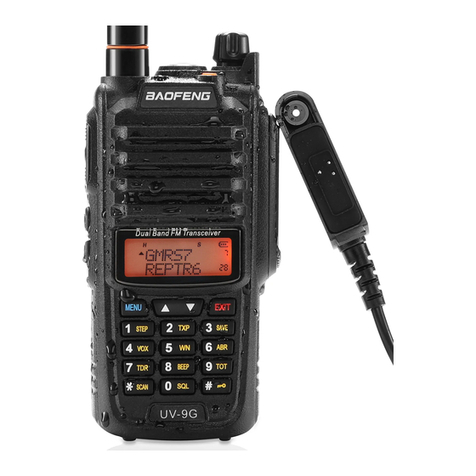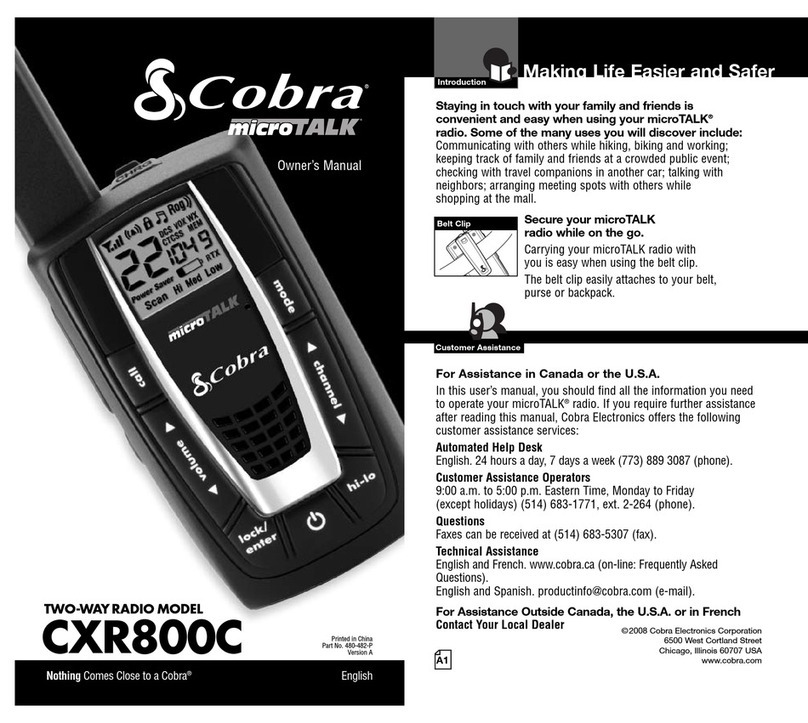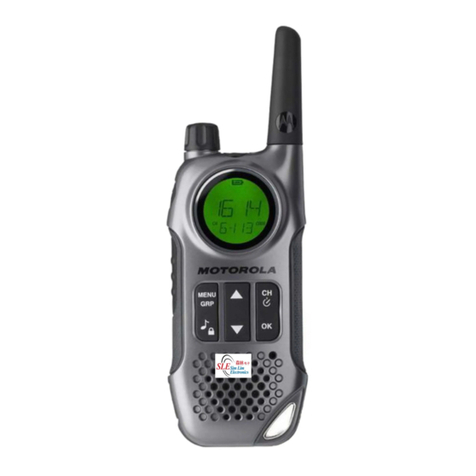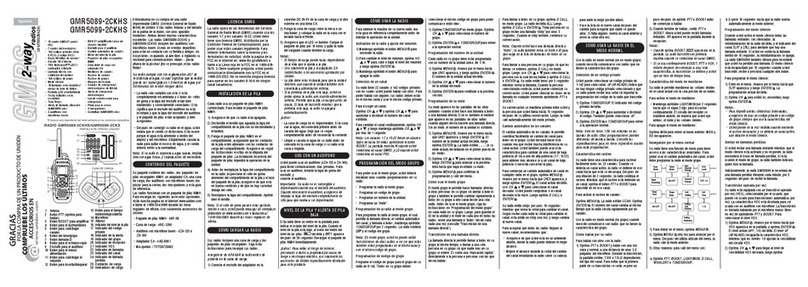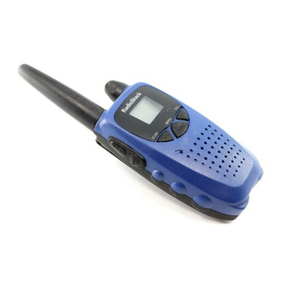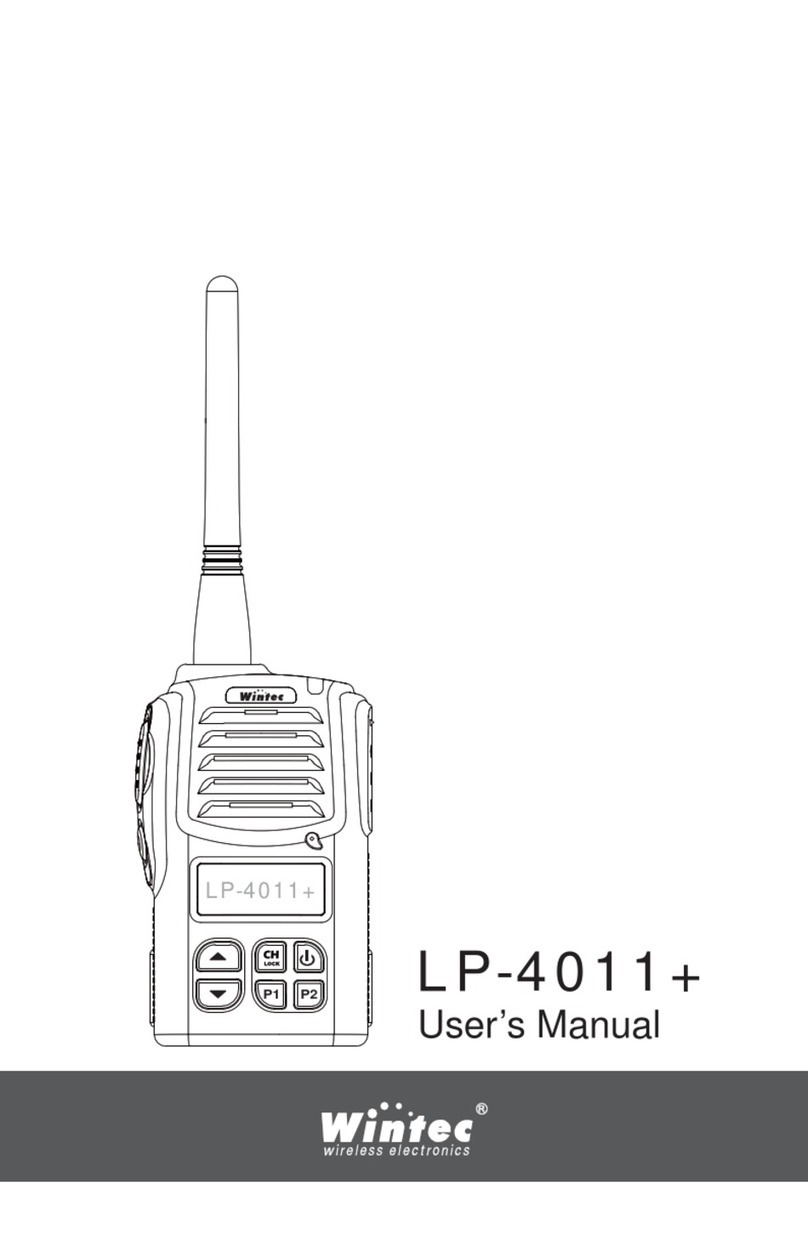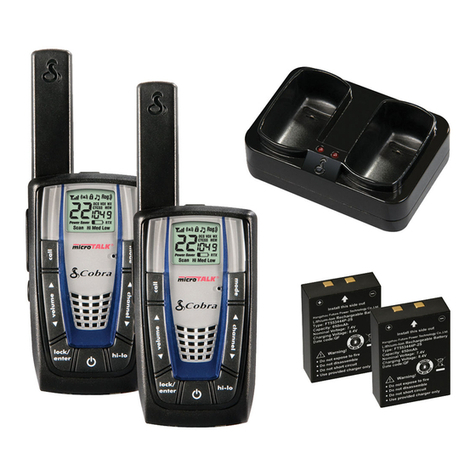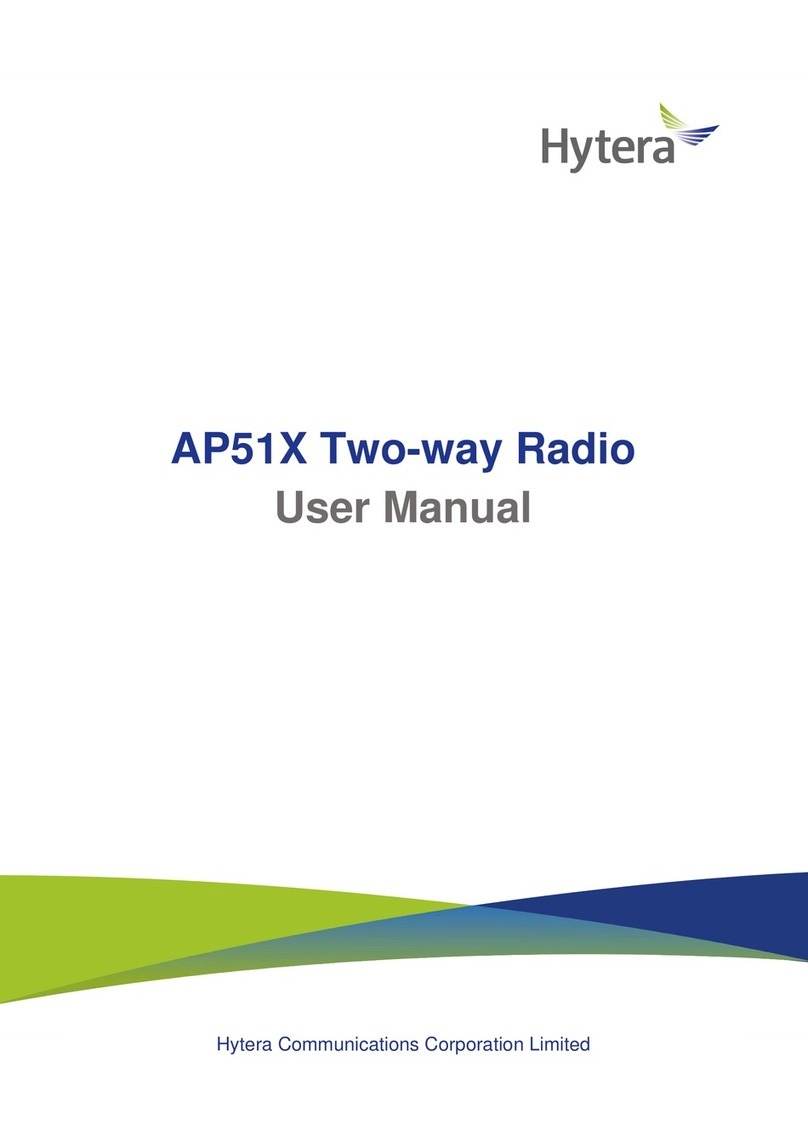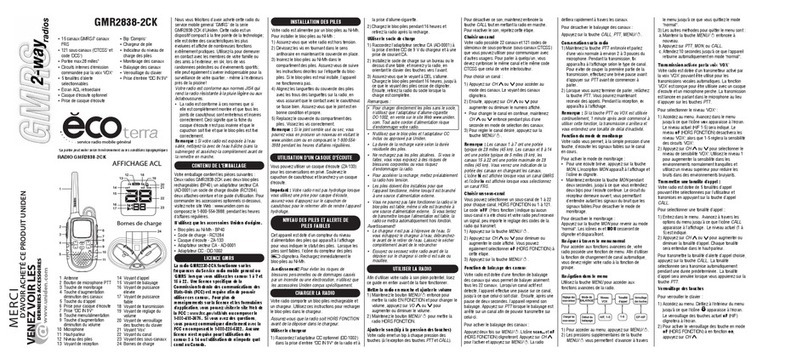
THEORY OF OPERATION PBS-446D
17
Prescaler Divider / Synthesizer Controller
U401 contains both a prescaler and synthesizer
controller. The prescaler squares and divides the
VCO output present at pin 6 by either 8 or 9,
determined by a synthesizer controller logic signal.
The exact number of times the prescaler is instructed
to change divisors is determined by the channel
frequency.
U401 contains a digital phase detector that works as
follows: when an operating channel is changed or the
receive/transmit mode switched, a new synthesizer
operating frequency is selected. Microcontroller U1
clocks new data into U401 internal buffer in
synchronization with clock pulses. The channel
information is stored in EE memory of U2 and is
loaded into RAM when the channel is selected.
Once new data is loaded into the buffer, a single
pulse from U1 appears at U401 to instruct the
synthesizer controller to latch and execute the new
data. U401 utilizes internal circuitry to determine
whether the present VCO output frequency is correct
by comparing the phase and frequency of the VCO
signal at Pin 6 to the 14.4 MHz reference oscillator at
Pin 8. U401 produces an output signal at Pin 2, a
single-ended phase/frequency detector output,
proportional to the phase difference between the two
input signals.
The loop filter C429, C427, R419, R420, R418, and
C426 transform the Pin 2 output signal to a DC
voltage for application to the VCO tuning varactor
CR402. The synthesizer system is “locked” when the
phase and frequency of both the reference and the
divided VCO signal are the same.
VCO / Buffer Amplifiers
Q403, L401, CR402 and associated components
form the VCO (Voltage Controlled Oscillator), a
resonant circuit that oscillates at frequencies from
416 MHz in receive (receive frequency - 43.65 MHz)
to 470 MHz in transmit. Varying the voltage at CR402
changes the varactor capacitance, which in turn
alters the VCO output frequency.
When in transmit mode a +5 VDC T/RSW signal is
applied to Q406, which turns on Q405 to draw current
through pin diode CR404 and L403. With CR404
biased on, L402 is effectively shorted to ground,
shifting the VCO frequency up 43.65 MHz.
Q401 and Q402 are buffer amplifiers, with Q402
feeding in the input of the synthesizer at Pin 6 and
Q401 feeding the receiver 1st local oscillator and the
transmitter pre-amplifier.
Oscillator Modulation
When the PBS-446D is in transmit, modulation
balance control U306E passes TX audio through to
the VCO modulation input at R416. TX audio is
applied to varactor CR403 to modulate the VCO. TX
audio is also routed to the Pin 1 input of TCVCXO
reference oscillator Y302. Low frequency tones
modulate the reference oscillator because the
synthesizer is not able to track them.
DIGITAL POTENTIOMETERS
U306 contains 6 digital potentiometers programmed
by U1, sharing the same clock and data outputs used
by the synthesizer and a separate Digital Pot Latch
signal from Pin 3. The digital potentiometers are
used in conjunction with U305B, a summing node
amplifier used for modulating the VCO and reference
oscillator. U306A, B, D, E, and F can only be
changed through serial programming, and can only
be performed by an authorized licensed RF
technician.
U306A is connected through R352 to the Pin 6 input
of U305B. U306A adjusts the DC output of U305B to
tune the reference oscillator frequency.
U306B is connected to the base of Q202 for transmit
power control. Q202, Q201, R202, and R203 adjust
the supply voltage to the transmitter.
Volume control U306C applies the processed voice
band signals at U303D to audio amplifier U307 when
in receive mode. Depressing the ON/VOL UP switch
SW301 increases the setting of U306C while VOL
DN/OFF switch SW303 decreases it.
Transmitter tone deviation control U306D applies the
output of the selective signaling low-pass filter U308
to the Pin 6 input of U305B through R350. U306D is
completely closed in receive mode.
Transmitter modulation balance control U306E is
used to apply the Pin 7 output of U305B to the VCO
modulation input. This will set the ratio of the
modulating signal applied to the VCO and the
reference oscillator. U306E is completely closed in
receive mode.
Transmitter voice deviation control U306F applies the
processed voice band signals at U303D to the Pin 6
input of U305B through R349. U306F is completely
closed in receive mode.
RECEIVER
As mentioned before, Q101 switches the regulated
+5 VDC to the receiver. The +VRX receiver voltage
is switched at the strobe duty cycle if programmed for
power strobe.
RF Amplifier
A received signal from the antenna passes through a
low-pass filter (C218, C217, L211, C101, and C202)
to the receiver headend. L101 and the associated
capacitors form a bandpass filter ahead of low-noise
RF amplifier Q102. L101 and C103 provide a notch
at the image frequency, 87.3 MHz below the receive
frequency. The amplified RF signal is applied to a 2-
pole bandpass filter consisting of L103, L104, and
associated capacitors. This circuit is tuned for 450 to
470 MHz.
1st Mixer
The amplified received input signal is applied to the
gate of FET mixer Q103. The 1st local oscillator
signal from the synthesizer module is applied to the
source of Q103. L106, C117 and C118 tune the drain




















